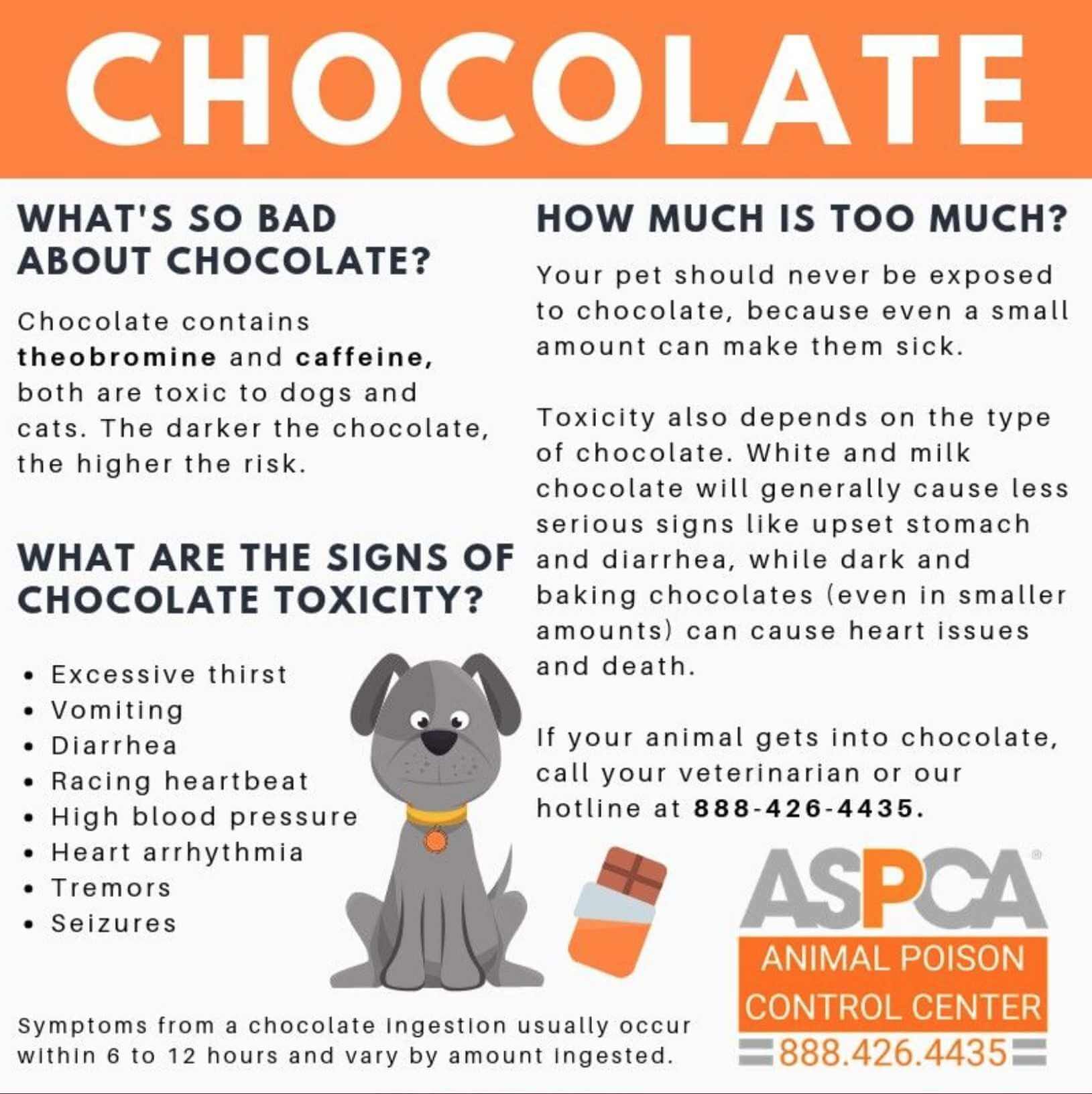

OK. With Halloween finally here, there are likely to be buffets of candy present in the house. Your pet is just waiting for the opportunity to pounce (I’m looking at you labradoodles). This seemed like a good opportunity to discuss a pretty common presentation to the clinic: Chocolate Ingestion!
WHO’S AT RISK?
Although cats and dogs are BOTH susceptible, it’s often dogs that we are the culprits and while chocolate is often the punchline to a joke, when we see these pups coming down to the clinic, no one is laughing. There are two components in chocolate that make ingestion so dangerous: Caffeine and Theobromine (substances called methylxanthine alkaloids). The amount of each really impacts the degree of severity. Theobromine is a natural component of cacao beans. During processing the more concentrated the chocolate, the more theobromine it will contain. This means that milk chocolate and white chocolate are far less risky than Baker’s chocolate and dark chocolate. Because we meet patients that vary in size from 2-3 pounds up to 150-200 lbs, the size of the pet also plays big role how sick a pet can get.
HOW DOES CHOCOLATE AFFECT PETS?
Once ingested, the toxic components are typically rapidly absorbed, but if ingested in large quantities, this can form a large, sticky mass of chocolate in the pet’s stomach and slow down the absorption. This often makes emesis (inducing vomit) less helpful to get the toxins out. Besides, most of these animals are already puking when they get to us! Methylxanthines cause changes to cells that result in excitation of the central nervous system and the heart. Clinical signs can be mild, causing only GI issues like vomiting and diarrhea or hyperexcitability; or more concerning cardiovascular arrhythmias, seizures, coma and possible death, if treatment is not performed. All pets are at risk, but ones with underlying heart or neurologic disorders like seizures are even more at risk if they eat this stuff!
WHAT CAN YOU DO?
First, call your vet at City By The Sea Veterinary Hospital ((848) 217-5000) and if we are not available call the ER (GSVS: 732-361-4837 or RBVH: 732-747-3636). Next collect ANY and ALL information you can:
- the type consumed – baker’s chocolate, milk chocolate, white chocolate, etc.;
- how much of it was consumed (typically in ounces or grams);
- how much your pet weighs; and finally,
- How long ago did your pet consume it? This will all help in calculating your pet’s risk and help us predict what the appropriate treatment will be.
While there is no direct treatment to stop the toxins, the veterinary team can support your pet with the appropriate therapies to help the toxin metabolize more quickly and address any symptoms, especially ones that are life- threatening (seizures, cardiac arrythmias, etc.). The toxic substances often wane in 24-48 hours.
HOW BAD IS IT?
Well… sometimes it can be pretty bad. Most cases get better with treatment, but pets that don’t get to the vet quickly can become seriously ill and sometimes die. Many of today’s toxins are coupled with other toxins – Chocolate-covered raisins (grapes and raisins can cause kidney failure), Chocolate-covered coffee beans, and marijuana brownies seem to be the most common ones we see. This toxicity calculator can be helpful (https://www.merckvetmanual.com/toxicology/food-hazards/chocolate-toxicosis-in-animals) but should not be relied on: CALL YOUR VET!
For more information:
- Merck Veterinary Manual: https://www.merckvetmanual.com/toxicology/food-hazards/chocolate-toxicosis-in-animals
- Veterinary Partner: https://veterinarypartner.vin.com/default.aspx?pid=19239&id=4952115
- ASPCA Poison Control: https://aspcapro.org/sites/default/files/m-toxbrief_0201.pdf


